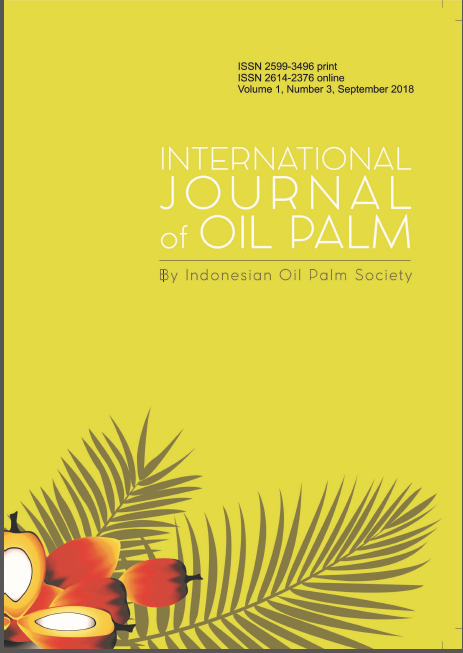Quantitative Analysis of Saturated Monoglyerides in Palm Oil Biodiesel by Gas Cromatography-Mass Spectrometry
Keywords:
biodiesel, GC-MS, monopalmitin, SIM, SMGAbstract
The current issue in biodiesel implementation in Indonesia is fuel filter clogging caused by precipitates. Some studies show that the saturated monoglycerides (SMGs) contribute the formation of precipitates in biodiesels. This research used the GC-MS method with the selected ion monitoring (SIM) approach to quantify SMG in palm oil biodiesel. Monomyristin (1-C14:0), monopalmitin (1-C16:0), monostearin (1-C18:0) and monoarachidin (1-C20:0) were selected as model compounds. The analysis was carried out using thermo scientific GC-MS equipped with a 5% phenyl methyl siloxane column (30 mx0.25 mmx0.25 ?m). The fragmentation ion of certified reference material (CRM) of SMGs was determined by utilizing a scanning approach. Then, the limit of detection (LOD) and limit of quantitation (LOQ) of each CRM was calculated by SIM to obtained SMG content at concentration 0.1, 0.05 and 0.025 ?g mL-1 with S N-1 ratio 3 and 9, respectively. Linearity of this method was determined at a concentration of 0.1-1.0 mg mL-1. The SMG content in palm oil-based biodiesels were analyzed through silylation with MSTFA and utilizing a monononadecanoin (1-C19:0) as in internal standard (IS). The results showed that the quantitation ion of 1-C14 ions for 1-C16:0, 1-C18:0, 1-C19:0 and 1-C20:0 were 357, 371, 399, 413 and 427 respectively. The LODs of this method were 1.48 ppb-23.97 ppb and LOQs were 4.43 ppb-71.92 ppb. This method showed a highly correlative response indicated by very high linearity with r=0.996-0.998. The highest SMG content in palm oil based biodiesel was monopalmitin (1-C16:0). Among palm based biodiesels, stearin biodiesel contained the highest SMG (0.333%-mass).




